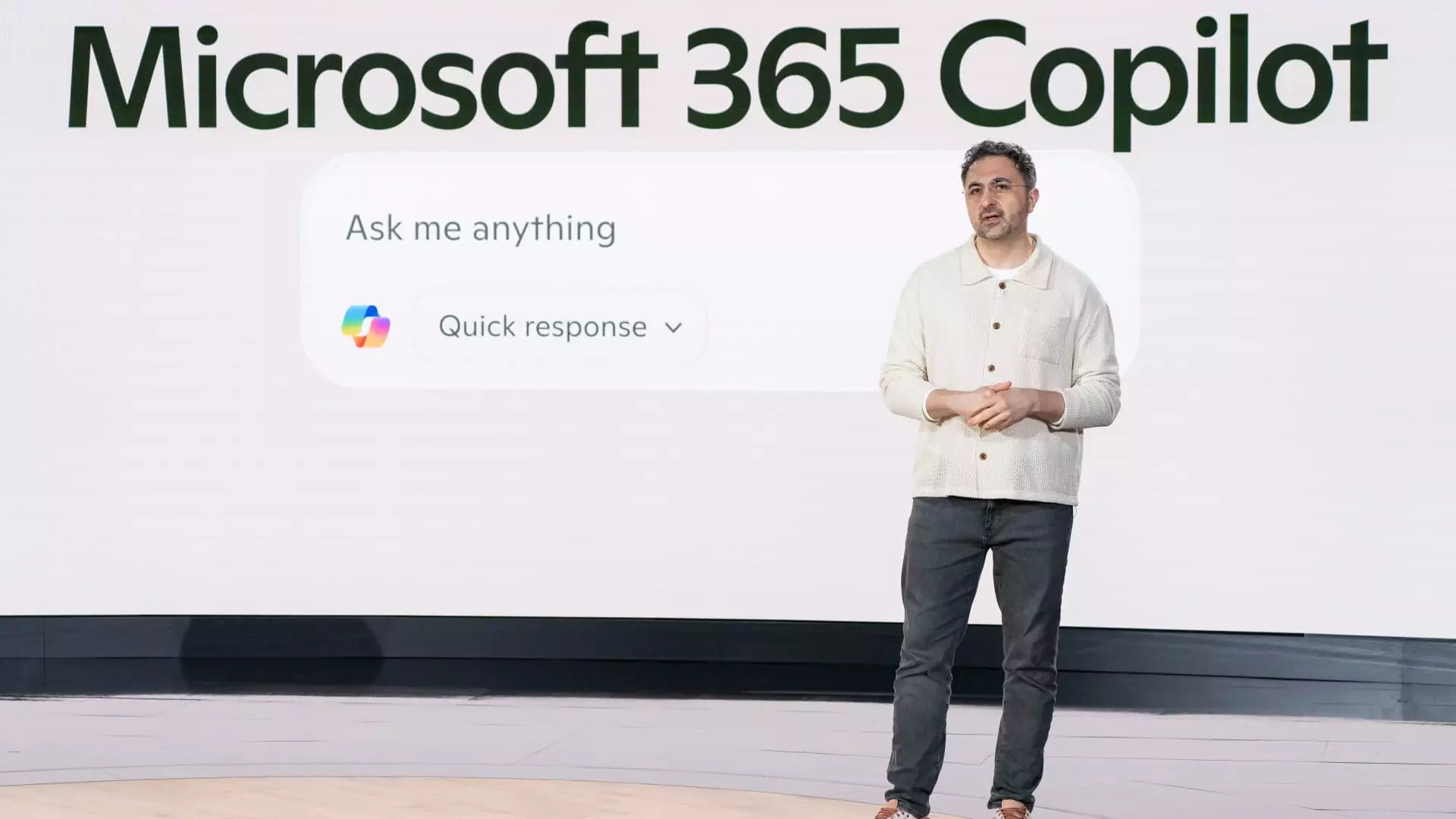In a world frantically racing toward artificial intelligence supremacy, Microsoft’s calculated approach to AI development can appear counterintuitive. While other tech giants race to unveil cutting-edge models, Microsoft has chosen to operate in the “off-frontier,” a term coined by CEO of AI, Mustafa Suleyman. This strategy might sound like a rejection of ambition, but upon deeper analysis, it reveals a shrewd business tactic grounded in economic prudence.
Suleyman argues that adopting a wait-and-see attitude allows Microsoft to glean insights and efficiencies without having to bear the hefty costs associated with bleeding-edge innovations. By lagging a few months behind the curve, the company can focus on targeted use cases that, while perhaps less glamorous than pioneering solutions, prove to be far more economically viable. While it may seem like Microsoft is taking the safe road, it’s really more like a well-considered turn on a complicated road—allowing the company to sidestep unnecessary potholes and pitfalls that come with rushed releases.
The Relationship Dynamic: Microsoft and OpenAI
Central to Microsoft’s strategy is its deepened partnership with OpenAI, a relationship rooted in substantial financial investment—$13.75 billion, to be exact. Yet, as their collaboration progresses, the dynamics of this partnership reveal potential red flags. Microsoft has not only depended on OpenAI for groundbreaking AI models but also faces the reality that its once-exclusive partner is seeking alliances elsewhere, such as its collaboration with Oracle on the $500 billion Stargate project. These fissures could create vulnerabilities, as reliance on a partner who is courting competitors is an inherently risky strategy.
The intricate relationship between the two entities suggests that while they have shared mutual benefits, the path forward may be riddled with uncertainty. OpenAI’s notable pivot toward Oracle may impact its commitment to Microsoft’s Azure cloud services, once considered sacrosanct. Such shifts could lead to a chaotic landscape where competitive pressures compromise the former unity, leaving Microsoft scrambling for alternatives if OpenAI’s trajectory diverges further.
Internal Aspirations and External Reality
Despite affirming its commitment to better internalize AI competencies, Microsoft has an uphill battle against the zeitgeist of immediate gratification. In a tech ecosystem that glorifies ‘first-to-market’ as a sacred mantra, Microsoft’s patience and caution might alienate it from mainstream conversation. There’s merit to Suleyman’s belief that the long-term horizon is the ultimate goal; however, the realities of a rapidly evolving market demand constant relevance in user experience instead of retrospection.
As Copilot, Microsoft’s AI assistant, evolves, it integrates features that mimic OpenAI’s innovations, like memory functionality. Surely, this reveals a commitment to keeping pace—though the question lingers: Can Microsoft genuinely create differentiation if it continues to shadow its competitors rather than establishing its own identity? The answer is layered, as the dichotomy of maintaining brand uniqueness while utilizing existing models presents both a conundrum and an opportunity.
The Cost of Compromise
Microsoft’s restraint in creating groundbreaking models while consolidating its existing strengths sparks an ethical debate. Is it compassionate and grounded to delay revolutionary innovations for better cost structure and effectiveness? Or does this compromise the potential to revolutionize entire industries with unparalleled technological advancements? If one considers that wave after wave of innovation has propelled society forward, then the risk of self-imposed limitation could be perceived as a betrayal of the very ethos that drives technological progress.
Suleyman’s remarks hint at the importance of capitalizing on strength rather than succumbing to the external pressure to lead the pack. However, in an era where AI capabilities have drastic implications on societal paradigms—from employment to privacy—resting on laurels could yield unintended adverse effects. The dichotomy between strategic patience and the need for quick results epitomizes the precarious climate in which companies like Microsoft operate.
Microsoft’s methodology reveals a multifaceted layer of business strategy interlaced with ethical considerations and competitive vulnerabilities. Balancing the immediate need for market relevance with long-term goals forms the crux of an ongoing internal dialogue at Microsoft. As the AI landscape continues to evolve, the question remains: Is there wisdom in this wait-and-see approach, or could it ultimately condemn Microsoft to an uninspired legacy?


Leave a Reply